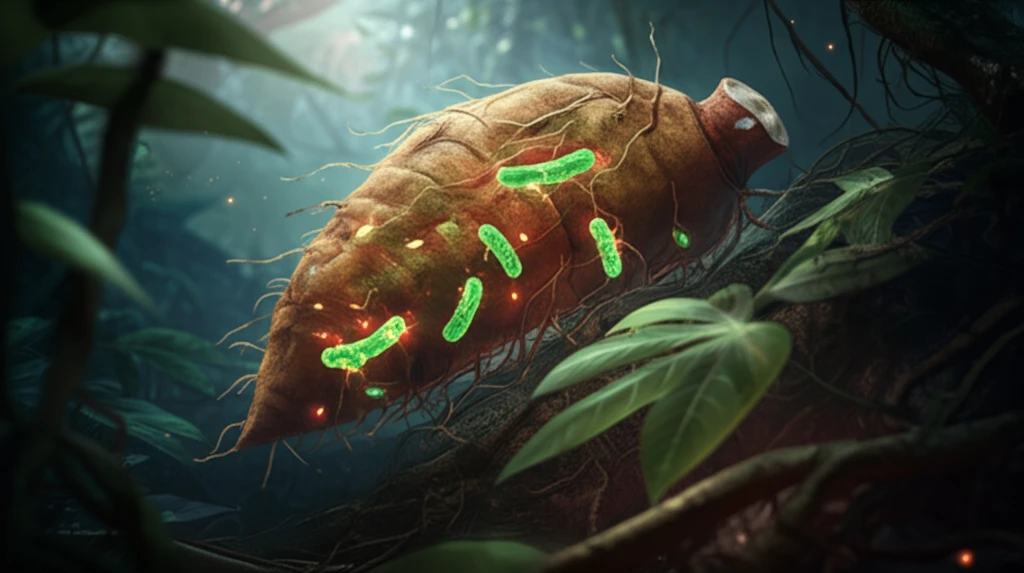
Cassava's New Bodyguards: How Bacteria Can Save a Staple Crop
"Could the secret to protecting this vital food source lie in the power of soil bacteria?"
Cassava (Manihot esculenta) is a dietary cornerstone for over half a billion people, particularly in the tropics, providing a vital source of carbohydrates. While known for its resilience against many pests, cassava is highly susceptible to Fusarium solani, a fungus that causes root rot, leading to significant crop losses.
Recent studies have spotlighted the beneficial bacterium Bacillus amyloliquefaciens (GB03) for its ability to enhance iron accumulation in cassava plants. This discovery has sparked interest in understanding whether this bacterium, along with other plant growth-promoting rhizobacteria (PGPR), can also bolster the plant's defense mechanisms against fungal infections, thus reducing the severity of cassava diseases.
New research investigates the potential of two bacterial strains, Bacillus amyloliquefaciens (GB03) and Microbacterium imperiale (MAIIF2a), to mitigate Fusarium root rot in cassava. The study delves into how these bacteria can not only promote plant growth but also enhance resistance to a devastating disease, offering a sustainable approach to safeguard this essential crop.
How Do Beneficial Bacteria Strengthen Cassava Against Root Rot?

The study reveals compelling evidence of the protective effects of Bacillus amyloliquefaciens (GB03) and Microbacterium imperiale (MAIIF2a) on cassava plants. Shoot-propagated cassava plants inoculated with either of these bacterial strains exhibited remarkable growth, with shoot and root development increasing by over 100% compared to control groups that were not inoculated. This significant boost in plant vigor suggests a promising avenue for enhancing crop yield.
- Enhanced Plant Growth: Cassava plants treated with GB03 or MAIIF2a showed significant increases in both shoot and root growth.
- Reduced Disease Incidence: PGPR inoculation lowered disease incidence by more than half in greenhouse settings.
- In Vitro Protection: The bacteria effectively reduced mycelial growth and fungal colonization in laboratory assays.
The Future of Cassava Farming: A Natural Approach
These findings illuminate the crucial role of beneficial bacteria in promoting plant health and providing protection against pathogen infections in cassava, a crop grown on a global scale. Harnessing these natural defenses could lead to more sustainable and effective strategies for managing root rot, ensuring food security for millions who depend on this vital crop.
